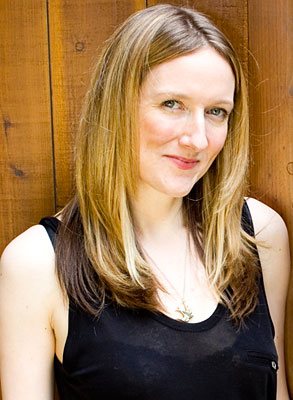Hair Color: a Tangled Issue for Natural-Leaning Types
 Like moisturizing and mani-pedis, hair dyeing is a standard beauty ritual for many women. Yet, while natural skin-care and non-toxic nail polish brands have flourished, the world of hair color clings to its chemical roots.
Like moisturizing and mani-pedis, hair dyeing is a standard beauty ritual for many women. Yet, while natural skin-care and non-toxic nail polish brands have flourished, the world of hair color clings to its chemical roots.
Concerns about the contents of hair color date back to the '70s, when news outlets alerted consumers to the dangers of widely-used ingredients like coal tar and benzidine, which are known carcinogens. Most manufacturers took these out and replaced them with less toxic chemicals.
But that didn't silence the alarms. Many of the substitute ingredients still used in today's hair dyes, like ammonia and parabens, have been linked to cancer in several research studies. The most prevalent, p-phenylenediamine (PPD) is a known allergen and has been linked to various cancers.
But, according to the American Cancer Society, evidence of hair dye's carcinogenic effect on people is still lacking. One highly-publicized study concluded that hairstylists "probably are exposed to cancer causing substances.” But it didn’t look at whether they actually developed cancer. Nor did the study address the risk to customers who come into contact with or inhale the noxious fumes (albeit less regularly than the stylists). Still, a lack of consensus about risk doesn't keep us from worrying.

So what are the natural choices available? Aveda, the face of natural hair color, seems to be the best of the traditional brands. Their plant-based dyes are “97% natural." But to do the trick of covering your grays and sticking around after you shampoo, Aveda hair color also contains PPD and ammonia. Natural Instincts, an at-home kit by Clairol, doesn't contain ammonia. But it does use PPD and slew of other ingredients on the dirty dozen list.

{{post.sponsorText}}
Henna-based and vegetable hair dyes are a growing market. "But the problem is that they suck—which might not be their fault," says Siobhan O'Connor, co-author of No More Dirty Looks, a book and website dedicated to non-toxic beauty. "The real issue is that, for a dye to actually work, some heavy-duty chemistry is in order. We're asking the product to be foolproof, consistent, stable, and effective. Nature hasn't—and I suspect won't—find a way to replicate those factors in a dye."
John Masters has already accepted the challenge. Although his famous “clean-air” Soho salon has closed, Masters has spent two years working on a safer hair color. “We're still in the middle of our mandatory stability-testing phase,” says Masters’ brand director, Jonni Lu. “We should have it ready by late summer or early fall.” Will Masters get to the root of the natural hair-dye problem we've been waiting for?
In the meantime, O'Connor suggests working with a colorist to wean yourself off dyes or at least limiting the number of times you go. "Space it out and know that you're taking a calculated risk," she says. "There are no 100 percent safe dyes that I would recommend using. So be real about that if you're going to do it anyway." —Lisa Elaine Held
Do you know of a salon that uses natural hair dye or a natural hair-color brand? Let us know in the Comments, below!
Looking for a sulfate-free shampoo? There's something you should know. Read: What's lurking in your sulfate-free shampoo
Loading More Posts...